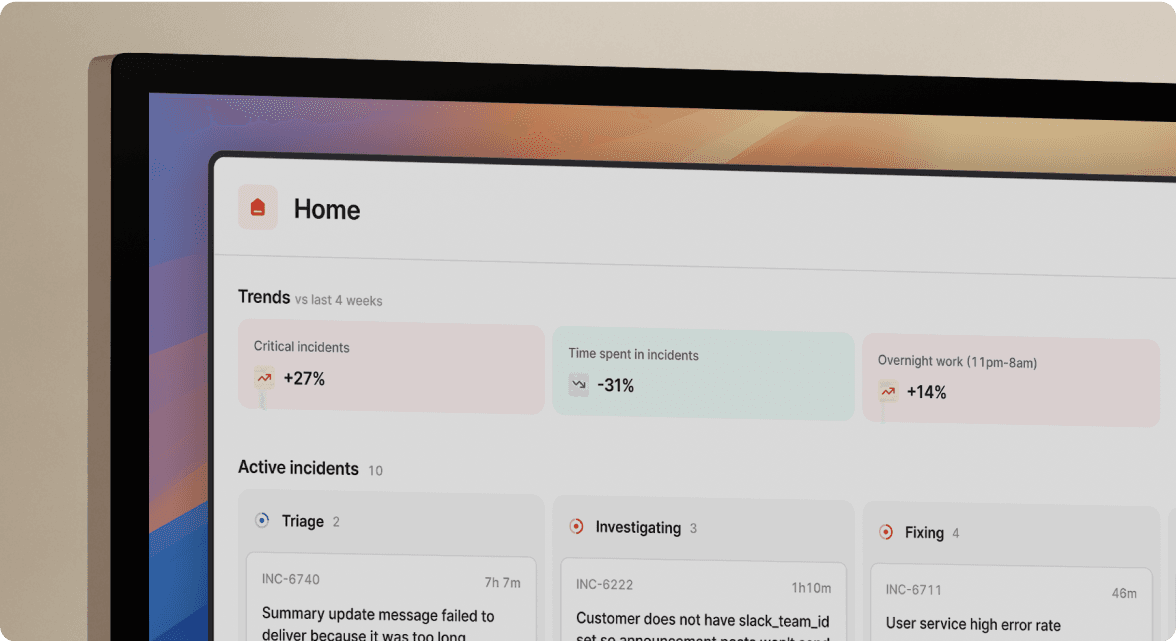How to get everyone at the company to value writing

Once a month, everyone at incident.io downs tools and focuses on writing for the whole day.
After many hours of furious typing and editing, we end up with 10-15 pieces of content to use over the following month. We call this day, Content Day. I’m actually writing this piece on Content Day — very meta!
How does it run?
Before Content Day, we store ideas to write about in a database in Notion, along with a rough structure of the article.
We don’t set the direction of what to write — we think it’s better to write something that you feel passionate and energised about. However, the resulting articles tend to cluster on the following topics:
- Evangelism: advice on incident response, supporting our point of view
- Technical: under-the-hood view of how we build the product
- Building in public: higher-level views of how we’ve built the product and company
- Hiring and culture: what it’s like to work here
On the day itself, we ensure there are no meetings booked. We start with a kickoff in the morning where we all decide what we’re going to write. We aim for an article per-person in company. As of February 2022, this means we end up with 10-15 articles at the end of the day.
After the kickoff, we start writing! This usually takes 3-5 hours per piece. Content Day is a collective effort: it’s just as important to review and edit others’ work, as it is to finish your own.
When we’re happy after editing, we gradually release the articles over the following month. This ensures we have a steady rhythm in our output. Here are some examples of what we’ve written on Content Day:
- What’s a fair compensation for being on-call?
- A B2B sales stack from Seed to Series A
- 4 principles for hiring our first 50 people
Why do we do it?
It helps us reach more people
We’re an early-stage company, and need all the awareness we can get. Writing publicly is an easy thing to do, where the payoff scales with the size of the internet. Loud voices, regularly is our strategy and it’s working well so far.
Doing it on a single day forces you to prioritise it
In my experience, writing often falls by the wayside if you don’t actively prioritise it. Doing it all on a single day forces your hand.
It’s also a type of work that often bleeds into evenings and weekends. This is a valuable part of your job, and you should be paid for it.
It elevates the importance of writing
There’s few things more important in a company than communicating well. Writing is a key component of this for us. Spending an entire day of the company’s time signals that it’s important. We get to benefit from practicing our writing skills, and spend time giving each other feedback.
Everyone doing it helps us surface diverse viewpoints
Many startups focus only on technical writing in tech blogs. This works, but we think there’s plenty to learn from all areas in the company. Whether it’s Customer Success, Sales or Talent — we want to amplify those viewpoints.
Things to bear in mind
Every choice we make has trade-offs, and content day is no exception.
We could be doing other things
Decisions in startups are dominated by opportunity cost. What else could we be doing with our time that is more valuable?
A plausible answer here is that we could build more. Given that we spend 19 days a month building, and 1 day writing, it feels like a sensible tradeoff at these levels.
Selection bias as we deliberately hire strong communicators
We explicitly hire strong communicators at incident.io, all of whom have experience writing well, so our viewpoint is biased. That isn’t going to be the case for every company. You might end up producing a lot of content that you might not want to publish, or needs some heavy-handed editing!
Synchronised day interrupts flow
The flip-side of doing it all on a single day means that it’ll never be the right time for everyone. It might interrupt flow on a project, or you’re just not feeling it.
In order to reduce impact on flow, we do Content Day on a Monday when we’re feeling fresh, and not in the middle of anything. And if you’re not feeling it on a given day, you can opt-out.
It probably doesn’t scale
Orchestrating this is quite easy at 10 people, but much more challenging at 200. At that size, I think it’s hard to make sure you’re not duplicating effort, are writing things that are aligned with the company viewpoint, and at the quality bar required.
Closing thoughts
Despite the tradeoffs, we think Content Day works really well for us at our size. It’s a special cultural practice that we’d like to continue for as long as we can. We’ll see how we get on!

See related articles
So good, you’ll break things on purpose
Ready for modern incident management? Book a call with one of our experts today.

We’d love to talk to you about
- All-in-one incident management
- Our unmatched speed of deployment
- Why we’re loved by users and easily adopted
- How we work for the whole organization



